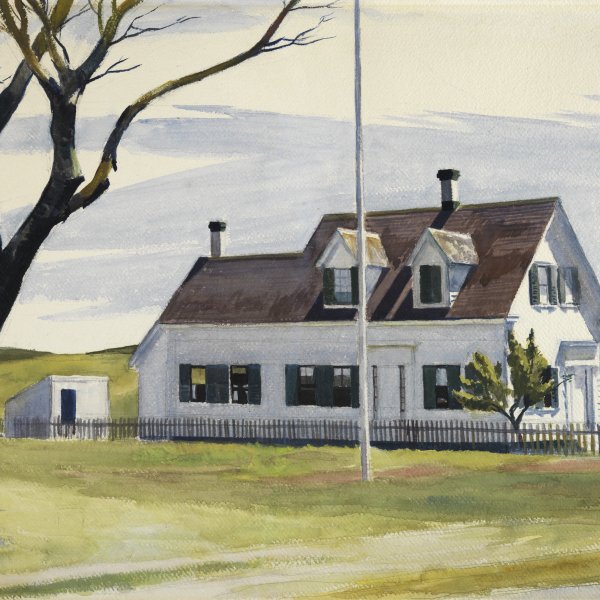Canadian Cove
1940
Oil on canvas.
81.2 x 121.9 cm
Museo Nacional Thyssen-Bornemisza, Madrid
Inv. no.
457
(1980.30
)
Not on display
Level 2
Permanent Collection
Level 1
Permanent Collection
Level 0
Carmen Thyssen Collection and Temporary exhibition rooms
Level -1
Temporary exhibition rooms, Conference room and EducaThyssen workshop
Milton Avery is difficult to classify as a painter. Despite the fact that he resided in New York from 1925 onwards, his pictorial universe was far removed from the tensions of city life and closer to the peace and calm of nature, while his painting, though underpinned by the realist tradition of the American Scene, is too abstract to be ascribed to this trend. However, although he was a good friend of Rothko and Gorky, who became prominent practitioners of American abstraction, his art never broke away sufficiently from representation to be considered part of the abstract movements.
Canadian Cove, a canvas dated 1940, is a good example of Avery’s delicate style of sketchy forms and brilliant colours and his peaceful, Arcadian world. It shows a tranquil coastal scene that recalls the summer the Avery family spent on the Gaspé peninsula near Quebec in 1938. His wife Sally and their daughter March are portrayed placidly reading or drawing on a promontory overlooking the cove, whose diagonal outline divides the composition into two trapezoidal forms.
The simplified manner of representing nature without detail and the personal palette of colours are characteristic of the artist’s unmistakeable lyricism. The harmonious bluish hue that pervades the entire composition and the application of the paint in loose brushstrokes that create large planes of colour denote the influence of Henri Matisse, and also point to the shift to greater abstraction that Avery’s work underwent soon afterwards.
Paloma Alarcó
Canadian Cove, a canvas dated 1940, is a good example of Avery’s delicate style of sketchy forms and brilliant colours and his peaceful, Arcadian world. It shows a tranquil coastal scene that recalls the summer the Avery family spent on the Gaspé peninsula near Quebec in 1938. His wife Sally and their daughter March are portrayed placidly reading or drawing on a promontory overlooking the cove, whose diagonal outline divides the composition into two trapezoidal forms.
The simplified manner of representing nature without detail and the personal palette of colours are characteristic of the artist’s unmistakeable lyricism. The harmonious bluish hue that pervades the entire composition and the application of the paint in loose brushstrokes that create large planes of colour denote the influence of Henri Matisse, and also point to the shift to greater abstraction that Avery’s work underwent soon afterwards.
Paloma Alarcó










